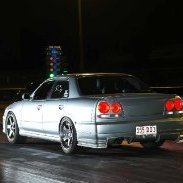Airflow meter in 'cooler piping
Announcements
-
Similar Content
-
Latest Posts
-
Yes, the Axis, Axis S and 350S models all had a huge chrome grill. All others from factory has the Nissan emblem with thick chrome horizontal bars.
-
No Stagea had the CVT. That was reserved for the V35. M35 Stageas had the RE5 and RE4 auto boxes.
-
G35 is the same. RH front : https://www.amayama.com/en/part/nissan/41001al501 LH front : https://www.amayama.com/en/part/nissan/41011al501
-
I don't know if you can disassemble the thing and put it backwards for different ramp rates. They're both "2 ways" or both "1.5 ways" because well, 2 ways and 1.5 ways are the same 'thing' I do not know for sure, but I believe the 38420-RSS15-B5 is the 1 way, and 38420-RSS20-B5 is the two way. In other words, I predict Nissan considers this: to be a 1.5 way. No idea what actually happens when it arrives/you disassemble it. It would be an excellent question to ask Nismo directly! I somehow doubt you will get an answer though, I feel you would be the first person to document what you encounter when you open the box and the internet would be grateful.







Recommended Posts
Create an account or sign in to comment
You need to be a member in order to leave a comment
Create an account
Sign up for a new account in our community. It's easy!
Register a new accountSign in
Already have an account? Sign in here.
Sign In Now